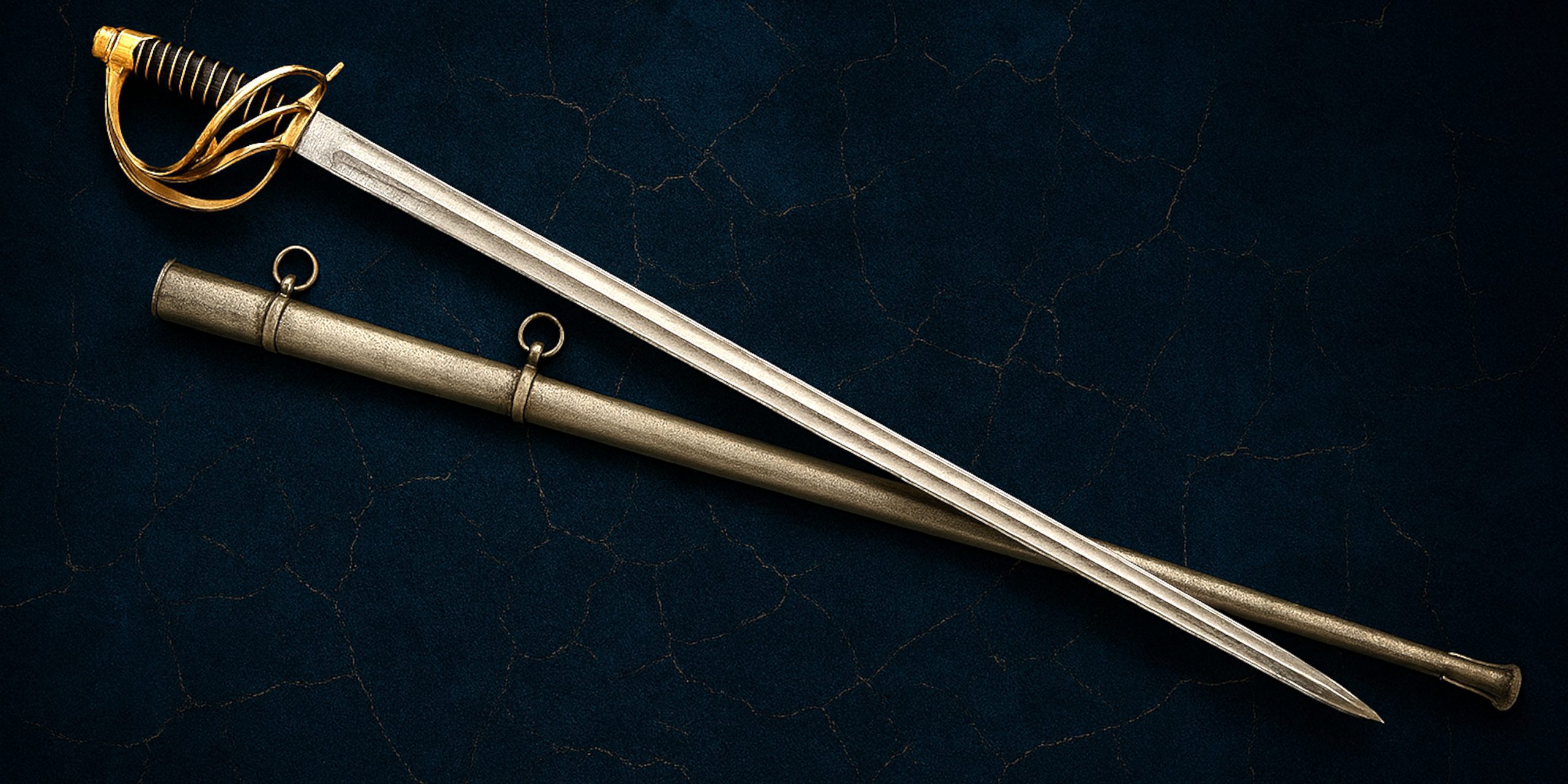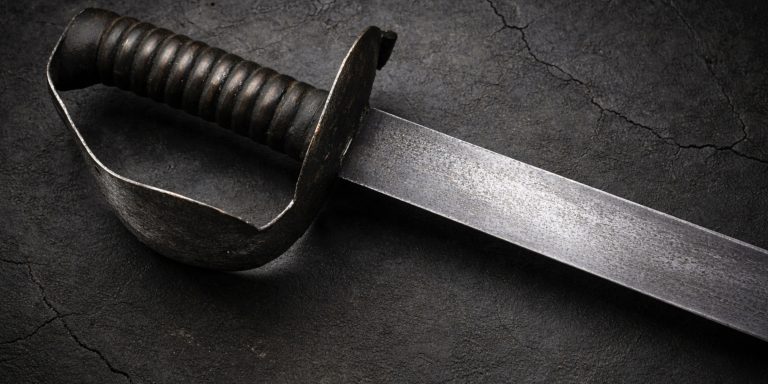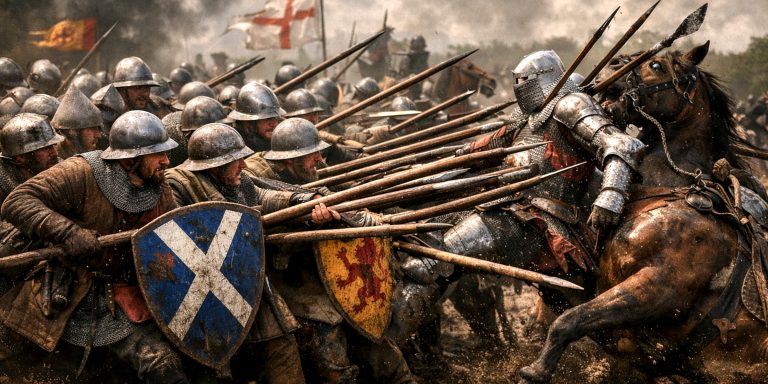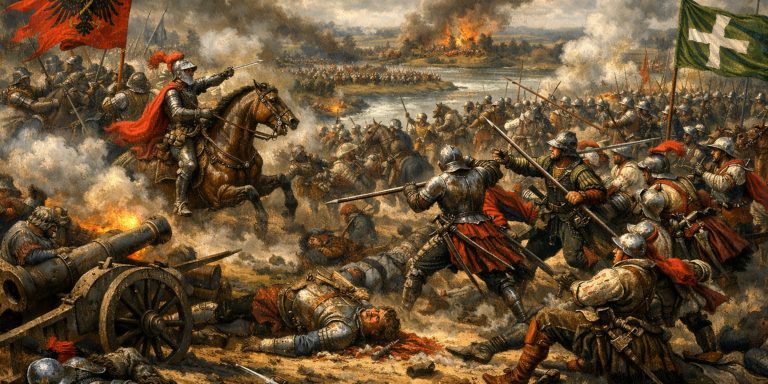
The Napoleonic cuirassier sword, issued primarily to French heavy cavalry under Napoleon Bonaparte, was a defining battlefield weapon of the early 19th century. Used by cuirassiers, the elite armoured cavalry of the Grande Armée, it was designed for devastating charges and close combat. Its long, straight blade made it effective against both infantry and opposing cavalry. The weapon came to symbolise French martial prestige during the Napoleonic Wars and has remained a key piece of military history.
Specification
| Feature | Details |
|---|---|
| Type | Heavy cavalry sword |
| Official Designation | Sabre de Cuirassier modèle An XI / XIII |
| Blade Length | Approx. 97 to 98 cm |
| Overall Length | Approx. 112 cm |
| Blade Type | Straight, single-edged with flat back |
| Blade Material | Forged steel |
| Hilt | Brass three-bar guard with leather-wrapped grip |
| Pommel | Integral to guard, brass |
| Scabbard | Steel, typically with twin suspension rings |
| Weight | Around 1.3 to 1.5 kg |
History and Evolution
Introduced in the early years of the Napoleonic Wars, the modèle An XI (Year 11 of the French Republican Calendar, roughly 1802–03) was created to equip France’s growing heavy cavalry corps. It was refined further into the modèle An XIII, which became the standard issue.
French cuirassiers were often deployed as shock troops, tasked with breaking enemy lines through sheer force. Their swords, long and unwieldy by some standards, were not intended for finesse but for brutal downward cuts during charges. The straight blade suited thrusting and slashing from horseback, particularly against infantry or lighter cavalry.
The sword’s design was influenced by earlier German and Austrian cavalry weapons but was made to French specifications, prioritising durability and reach.
Advantages and Disadvantages
Advantages:
- Reach and impact: Its long, straight blade allowed riders to strike infantry or enemy cavalry from a higher vantage point.
- Sturdy construction: Designed to withstand the force of repeated blows during charges.
- Psychological effect: Coupled with the cuirass and helmet, it enhanced the imposing image of the French heavy cavalry.
Disadvantages:
- Weight and length: While suitable on horseback, it was unwieldy on foot or in confined spaces.
- Limited flexibility: Unlike curved sabres, the straight blade was less effective for slashing in fluid cavalry skirmishes.
- Bulkiness: Difficult to carry when dismounted and prone to snagging due to its long scabbard.
Comparison with Similar Weapons
| Feature | Napoleonic Cuirassier Sword | British 1796 Heavy Cavalry Sword | Austrian M1798 Cavalry Sword |
|---|---|---|---|
| Blade Shape | Straight | Straight with hatchet point | Broad and slightly curved |
| Blade Length | Approx. 98 cm | Approx. 90 cm | Approx. 85–95 cm |
| Intended Use | Thrusting and cutting | Cutting, particularly slashing | Mixed use |
| Guard Type | Brass three-bar | Disc guard with knucklebow | Iron stirrup or bar guard |
| Weight | 1.3–1.5 kg | 1.2–1.4 kg | 1.0–1.3 kg |
The French cuirassier sword was more formalised in design and construction than many contemporaries, reflecting the French preference for uniformity within their military corps.
Legacy
The cuirassier sword came to represent the might of the Napoleonic heavy cavalry. It was widely exported or copied by other European armies in the decades following Napoleon’s campaigns. Many post-Napoleonic cavalry weapons bore traces of its influence, particularly in blade design and hilt construction.
In reenactment circles and museums, the sword is often a centrepiece of Napoleonic displays. It remains one of the most recognisable military swords of the period.
Where to See
- Musée de l’Armée, Paris (France): Houses multiple examples from the Napoleonic campaigns.
- National Army Museum, London (UK): Includes captured or gifted examples from the Peninsular and Waterloo campaigns.
- Royal Armouries, Leeds (UK): Exhibits comparisons between British and French cavalry weapons.
- Musée des Invalides, Paris: Displays full cuirassier kits including the An XIII sabre.
Collector’s Guide and Auction Prices
Rarity and Authenticity:
- The modèle An XIII is more common than the earlier An XI, but both are highly sought after.
- Many were marked with inspection stamps, dates, and arsenal engravings, which help establish provenance.
Auction Prices (as of recent years):
| Condition | Approximate Price Range |
|---|---|
| Museum-grade, pristine | £3,000 – £5,000+ |
| Good condition, marked | £1,500 – £3,000 |
| Relic condition | £600 – £1,200 |
| Replica (modern) | £150 – £400 |
Prices vary based on originality of components, maker’s mark, and campaign use. Items with Waterloo or Russian campaign provenance can fetch significantly higher sums.
Collector Tips:
- Check for matching serial numbers between blade and scabbard.
- Brass hilts are often stamped with imperial armoury marks.
- Avoid pieces with polished-away detail or mismatched parts.
- Authentic scabbards in steel add notable value.
The Napoleonic cuirassier sword stands as a potent reminder of one of Europe’s most intense military periods. For collectors, historians, and military enthusiasts, it remains both a tangible artifact and a powerful symbol of mounted warfare at its height.



